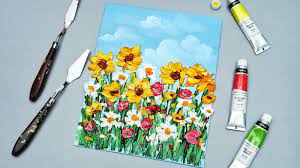The Art of Painting
Painting is a timeless form of artistic expression that has captivated audiences for centuries. From the intricate details of Renaissance masterpieces to the bold strokes of modern abstract art, painting offers a window into the soul of the artist.
One of the most striking aspects of painting is its ability to evoke emotions and provoke thought without the need for words. Through colour, composition, and technique, painters can convey complex ideas and narratives in a single image.
Each brushstroke is a deliberate choice, each colour selection a reflection of the artist’s vision. Whether capturing a fleeting moment in time or exploring abstract concepts, painting allows for endless possibilities and interpretations.
Artists throughout history have used painting as a means to document their surroundings, express their innermost thoughts and feelings, or challenge societal norms. From landscapes that transport us to distant lands to portraits that reveal the depths of human emotion, painting has the power to transcend boundaries and connect us on a universal level.
As viewers, we are invited to immerse ourselves in the world created by the artist, to see through their eyes and experience their unique perspective. Whether we find solace in the tranquillity of a still life or feel inspired by the energy of an abstract composition, painting has the ability to touch our hearts and minds in profound ways.
So next time you stand before a canvas, take a moment to appreciate the artistry and skill that went into creating it. Let yourself be transported by the beauty and complexity of painting, and allow it to awaken your senses and stir your imagination.
Simple and Creative Ideas for Beginners in Painting
Exploring the World’s Most Iconic Painting
Understanding the Art Form: A Definition of Painting
5. Tracing
- What started painting?
- What are easy painting ideas?
- What is that one famous painting?
- What is the definition of painting?
- What is the history of paint?
What started painting?
The origins of painting can be traced back to the dawn of human civilization, where early inhabitants of the Earth used natural pigments to create images on cave walls. These ancient depictions, known as cave paintings, served various purposes ranging from storytelling and communication to rituals and spiritual beliefs. The act of painting evolved over time, with different cultures developing their unique styles and techniques, laying the foundation for the diverse art forms we appreciate today. From the primitive tools of our ancestors to the sophisticated materials and methods employed by contemporary artists, painting has continually evolved as a means of expression and creativity throughout history.
What are easy painting ideas?
When seeking easy painting ideas, consider starting with simple subjects that inspire you, such as a favourite flower, a serene landscape, or a still life arrangement of everyday objects. Experiment with different colour palettes and techniques to add interest and depth to your work. Don’t be afraid to let your creativity flow and explore unconventional perspectives or abstract interpretations of familiar themes. Remember that the beauty of painting lies in the process of creation, so embrace the opportunity to express yourself freely and enjoy the journey of bringing your ideas to life on canvas.
What is that one famous painting?
The question “What is that one famous painting?” often arises in discussions about art, reflecting a curiosity about a singular masterpiece that stands out among countless works of art throughout history. While there are many iconic paintings that have left an indelible mark on the art world, it is the enigmatic smile of Leonardo da Vinci’s “Mona Lisa” that frequently comes to mind. This portrait, with its subtle expression and mysterious aura, has become synonymous with the concept of timeless beauty and intrigue, captivating viewers from around the globe and cementing its status as one of the most recognisable and revered paintings in the world.
What is the definition of painting?
The definition of painting encompasses a broad spectrum of artistic practices that involve applying pigment to a surface to create images, forms, or expressions. Painting is not merely the act of transferring colours onto a canvas but is a profound means of communication and storytelling through visual language. It involves the use of various techniques, styles, and mediums to convey emotions, ideas, and narratives. At its core, painting is a transformative process where artists breathe life into their visions, inviting viewers to interpret and engage with the artwork on a personal and emotional level.
What is the history of paint?
The history of paint is a fascinating journey that spans thousands of years and reflects the evolution of human creativity and ingenuity. Dating back to ancient civilizations, such as the Egyptians and Greeks, early forms of paint were made from natural materials like clay, charcoal, and plant extracts. These pigments were mixed with binders such as animal fat or egg whites to create colourful substances for cave paintings, pottery decoration, and other artistic expressions. Over time, advancements in technology and chemistry led to the development of more sophisticated paints, including oil paints in the Renaissance period and acrylic paints in the 20th century. Today, paint continues to be a vital medium for artists and craftsmen alike, embodying a rich history of innovation and artistic exploration.


Leave a Reply